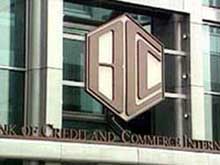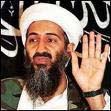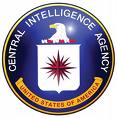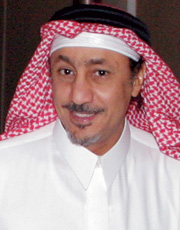Analysis by Lucy Komisar
Inter Press Service (IPS) – April 4, 2007
Now that the U.S. Congress is investigating the truth of President George W. Bush’s statements about the Iraq war, they might look into one of his most startling assertions: that there was a link between Saddam Hussein and Osama bin Laden.
Critics dismissed that as an invention. They were wrong. There was a link, but not the one Bush was selling. The link between Hussein and Bin Laden was their banker, BCCI. But the link went beyond the dictator and the jihadist — it passed through Saudi Arabia and stretched all the way to George W. Bush and his father.
 BCCI was the Bank of Credit and Commerce International, a dirty offshore bank that then-president Ronald Reagan’s Central Intelligence Agency used to run guns to Hussein, finance Osama bin Laden, move money in the illegal Iran-Contra operation and carry out other agency black ops. The Bushes also benefited privately; one of the bank’s largest Saudi investors helped bail out George W. Bush’s troubled oil investments.
BCCI was the Bank of Credit and Commerce International, a dirty offshore bank that then-president Ronald Reagan’s Central Intelligence Agency used to run guns to Hussein, finance Osama bin Laden, move money in the illegal Iran-Contra operation and carry out other agency black ops. The Bushes also benefited privately; one of the bank’s largest Saudi investors helped bail out George W. Bush’s troubled oil investments.
BCCI was founded in 1972 by a Pakistani banker, Agha Hasan Abedi, with the support of Sheik Zayed bin Sultan al Nahyan, ruler of Abu Dhabi and head of the United Arab Emirates. Its corporate strategy was money laundering. It became the banker for drug and arms traffickers, corrupt officials, financial fraudsters, dictators and terrorists.

The CIA used BCCI Islamabad and other branches in Pakistan to funnel some of the two billion dollars that Washington sent to Osama bin Laden’s Mujahadeen to help fight the Soviets in Afghanistan. It moved the cash the Pakistani military and government officials skimmed from U.S. aid to the Mujahadeen. It also moved money as required by the Saudi intelligence services.
The BCCI operation gave Osama bin Laden an education in offshore black finance that he would put to use when he organised the jihad against the United States. He would move money through the Al-Taqwa Bank, operating in offshore Nassau and Switzerland with two Osama siblings as shareholders.
At the same time, BCCI helped Saddam Hussein, funneling millions of dollars to the Atlanta branch of the Italian government-owned Banca Nazionale del Lavoro (BNL), Baghdad’s U.S. banker, so that from 1985 to 1989 it could make four billion dollars in secret loans to Iraq to help it buy arms.
U.S. Congressman Henry Gonzalez held a hearing on BNL in 1992 during which he quoted from a confidential CIA document that said the agency had long been aware that the bank’s headquarters was involved in the U.S. branch’s Iraqi loans.
from a confidential CIA document that said the agency had long been aware that the bank’s headquarters was involved in the U.S. branch’s Iraqi loans.
Kickbacks from 15 percent commissions on BNL-sponsored loans were channeled into bank accounts held for Iraqi leaders via BCCI offices in the Caymans as well as in offshore Luxembourg and Switzerland. BNL was a client of Kissinger Associates, and Henry Kissinger was on the bank’s international advisory board, along with Brent Scowcroft, who would become George Bush Sr.’s national security advisor. That connection makes the Bush administration’s surprise and indignation at oil for food payoffs in Iraq seem disingenuous.
Important Saudis were influential in the bank. Sheik Kamal Adham, brother-in-law of the late Saudi King Faisal, head of Saudi intelligence from 1963 to 1979, and the CIA’s liaison in the area, became one of BCCI’s largest shareholders. George Bush Sr. knew Adham from his time running the CIA in 1975.

Another investor was Prince Turki bin Faisal al-Saud, who succeeded Adham as Saudi intelligence chief. The family of Khalid Salem bin Mahfouz, owner of the National Commercial Bank, the largest bank in Saudi Arabia, banker to King Fahd and other members of the ruling family, bought 20 to 30 percent of the stock for nearly one billion dollars. Bin Mahfouz was put on the board of directors.
The Arabs’ interest in the bank was more than financial. A classified CIA memo on BCCI in the mid-1980s said that its principal shareholders are among the power elite of the Middle East, including the rulers of Dubai and the United Arab Emirates, and several influential Saudi Arabians. They are less interested in profitability than in promoting the Muslim cause.
The Bushes’ private links to the bank passed to Bin Mahfouz through Texas businessman James R. Bath, who invested money in the United States on behalf of the Saudis. In 1976, when Bush was the head of the CIA, the agency sold some of the planes of Air America, a secret proprietary airline it used during the Vietnam War, to Skyway, a company owned by Bath and Bin Mahfouz. Bath then helped finance George W. Bush’s oil company, Arbusto Energy Inc., in 1979 and 1980.
When Harken Energy Corp., which had absorbed Arbusto (by then merged with Spectrum 7 Energy), got into financial trouble in 1987, Jackson Stephens of the powerful, politically-connected Arkansas investment firm helped it secure 25 million dollars in financing from the Union Bank of Switzerland. As part of that deal, a place on the board
was given to Harken shareholder Sheik Abdullah Taha Bakhsh, whose chief banker was BCCI shareholder Bin Mahfouz.
Then, in 1988, George Bush Sr. was elected president. Harken benefited by getting some new investors, including Salem bin Laden, Osama bin Laden’s half-brother, and Khalid bin Mahfouz. Osama bin Laden himself was busy elsewhere at the time — organizing al Qaeda.
The money BCCI stole before it was shut down in 1991 — somewhere between 9.5 billion and 15 billion dollars — made its 20-year heist the biggest bank fraud in history. Most of it was never recovered. International banks’ complicity in the offshore secrecy system effectively covered up the money trail.
But in the years after the collapse of BCCI, Khalid bin Mahfouz was still flush with cash. In 1992, he established the Muwafaq (blessed relief) Foundation in the offshore Channel Islands. The U.S. Treasury Department called it an al Qaeda front that receives funding from wealthy Saudi businessmen.
When the BCCI scandal began to break in the late 1980s, the Sr. Bush administration did what it could to sit on it. The Justice Department went after the culprits — was virtually forced to — only after New York District Attorney Robert Morgenthau did. But evidence about BCCI’s broader links exist in numerous U.S. and international investigations. Now could be a good time to take another look at the BCCI-Osama-Saddam-Saudi-Bush connection.
*Investigative journalist Lucy Komisar’s chapter, The BCCI Game: Banking on America, Banking on Jihad, appears in the new book A Game as Old as Empire, just published by Berrett-Koehler (San Francisco).


How fast can we prosecute these abominable people?
Lucy-
Any ideas or rumors what SEC will be questioning Hank Greenberg on?
Any questions on AI Credit, a subsidiary of AIG Insurance with the same access to foreign
banks to help their customers avoid taxes?
LK: I don’t know, but good points! Tell me more!
Pingback: London Observer writer stumbles, unaware, on key that could blow Browder story wide open – The Komisar Scoop
Pingback: How UK, U.S. created international money-laundering system – The Komisar Scoop